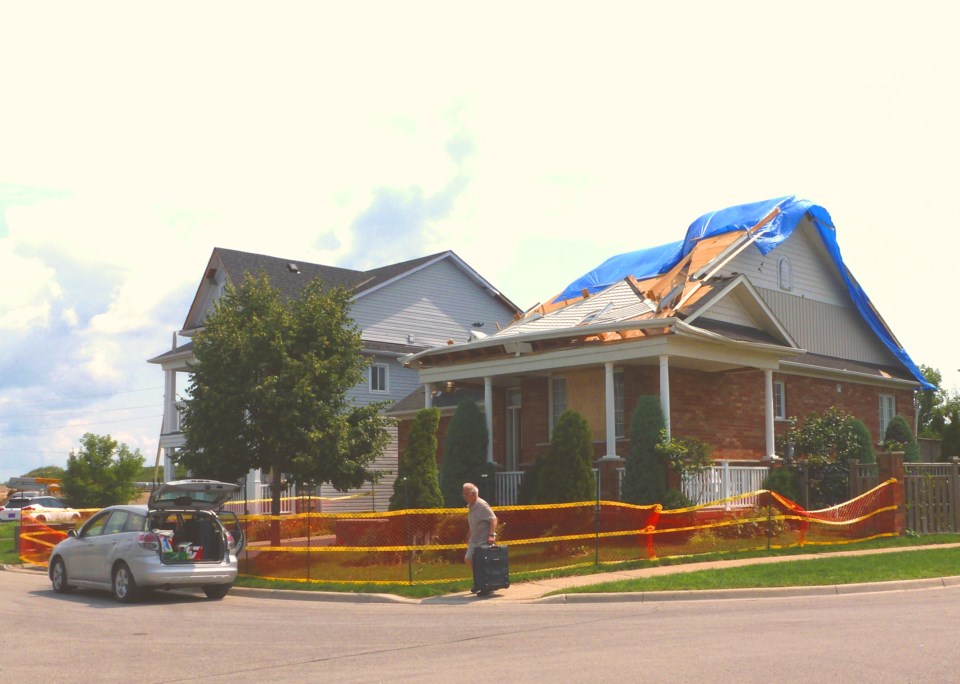As destructive and terrifying as Barrie’s July 15 tornado was, it was not a particularly singular storm.
“This was not a unique tornado, and this is not a rare tornado,” said Dr. Connell Miller, a wind impacts researcher for the Northern Tornadoes Project at Western University. “These tornadoes happen often in Canada. I’d say we probably get 10-plus of them a year. This wasn’t like a once-in-a-hundred-years sort of event.
“The Barrie tornado in 1985 would be that sort of very severe event you wouldn’t see very often," he added.
Miller, also a member of the project’s rapid-response ground survey team, noted Ontario had four other EF2 tornadoes last Thursday — in Lake Traverse, Dwight, Lorneville and Zephyr, Little Britain — along with the one in Barrie’s Mapleview Drive East and Prince William Way area.
“This (Barrie tornado) just happened to be the one that went through a subdivision,” he said. “So that’s why it got a lot more attention, which is fair. It affected the most people (and) there were some injuries because of it.
“Anytime you see structural damage, because Canada has such a low population density, it doesn’t tend to happen as often,” Miller added, “so it’s always striking to see just sort of the debris from the damage that went through the neighbourhood.”
His role in the Barrie survey was to fly a drone over the tornado area Wednesday and take thousands of photos that will be stitched together to create one gigantic image detailing the damage. This will show which houses in the subdivision were damaged and give a very detailed path of the tornado. The event map should be available the middle of next week.
“People can go through and see every picture that we’ve taken of the damage… each house and what effect,” Miller said.
Barrie’s July 15 tornado reached wind speeds of 210 kilometres an hour, according to Environment and Climate Change Canada (ECCC), and had a damage track about 12 kilometres long and a maximum path width of 600 metres.
Just after 2:30 p.m. that day, a tornado tracked from the miniature golf course on Huronia Road and Mapleview Drive and continued east toward Prince William Way, where it caused significant damage on the north side of Mapleview, and then went beyond the Prince William Way subdivision, according to ECCC.
Ten people were treated at Royal Victoria Regional Health Centre (RVH) for injuries suffered during the storm, which also caused structural, tree and vehicle damage and dozens of homes are deemed uninhabitable. All 10 people have since been released from hospital and are recovering.
On May 31, 1985, at least nine tornadoes tore through Ontario, killing 12 people. That tornado, which struck Barrie just before 5 p.m., was 600 metres wide and carried wind speeds of more than 400 km/h, levelling trees, tossing cars and indiscriminatingly destroying buildings of all types.
Eight people were killed in Barrie by the F4 tornado (how they classified twisters then), another 155 injured.



